What Is Cash Over Valuation (COV) And Why Would You Pay It?
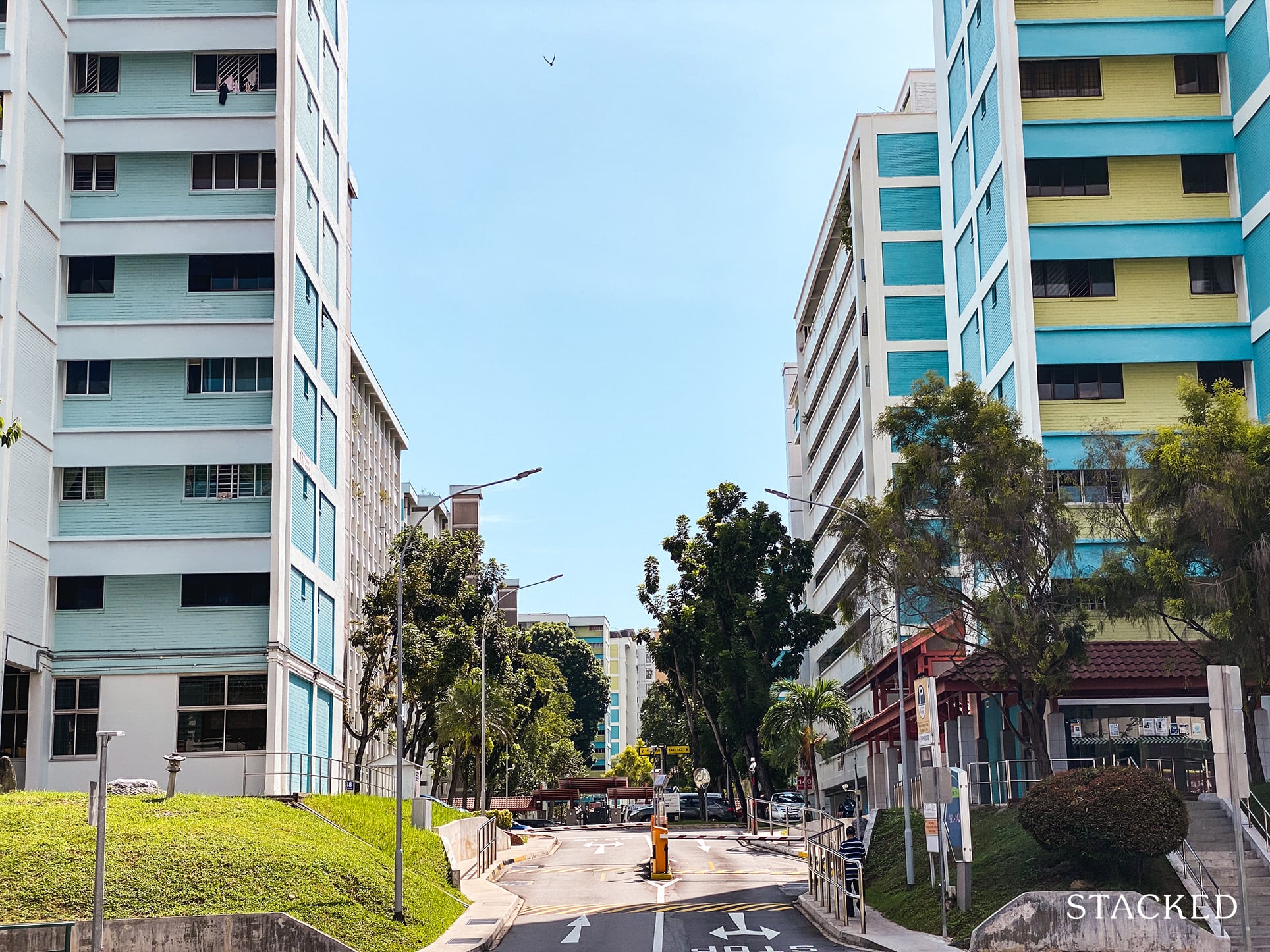
Get The Property Insights Serious Buyers Read First: Join 50,000+ readers who rely on our weekly breakdowns of Singapore’s property market.
A seasoned content strategist with over 17 years in the real estate and financial journalism sectors, Ryan has built a reputation for transforming complex industry jargon into accessible knowledge. With a track record of writing and editing for leading financial platforms and publications, Ryan's expertise has been recognised across various media outlets. His role as a former content editor for 99.co and a co-host for CNA 938's Open House programme underscores his commitment to providing valuable insights into the property market.
We’re seeing a resale flat revolution. As of Q3, resale prices are rising at their fastest pace since around 2012, and transaction volumes are at a 10-year high. We have a more detailed discussion of this in our previous article.
Now, our guys on the ground have commented that they have been seeing higher Cash Over Valuation (COV) as of recent times. More specifically, even in further out regions, such as Yishun and Woodlands, we are seeing more people willing to pay this.
As a quick recap, back in the day, the valuation was done before the OTP was signed, so people could negotiate the COV. Today, the valuation is done only after the OTP is signed. Given the slow market for years, prices have never really gone far beyond the valuation, but given the recent exuberance, we’re now observing more of this.
If you’re thinking of getting a resale flat soon – or selling yours – here’s what you should know about it:
What is COV?
Simply put, it’s the discrepancy between the sale price of the flat, and the actual valuation of the flat.
For example, say the seller wants $450,000 for their flat, but the HDB valuation is $440,000. This would mean a COV of $10,000.
The main problem with COV is that it isn’t covered by your housing loan or CPF, and it affects the Buyers Stamp Duty (BSD)
The maximum loan quantum for your flat – be it from the bank or HDB – is always based on the lower of the price or valuation.
Using the example of a bank loan, the cap is 75 per cent of the lower of price or value. So if you purchase a resale flat for $400,000, but the valuation is $380,000, then your maximum loan is only $285,000.
The extra $20,000 in (your COV, basically) has to be in cash, aside from your deposit for the flat. Also, remember that this comes after you’ve agreed on the price, and secured the OTP. Backing out, if you can’t cover the COV, it means losing your Option monies.
Stamp duties, unlike home loans, are always based on the higher of the price or valuation.
With regard to the same flat in our example, the BSD would apply on the price of $400,000, and not $380,000.
This would mean paying a BSD of $6,600, instead of $6000. It’s not a huge amount, but it is an added, non-recoverable cost.
COV is only an added risk when it comes to resale flats, not new flats
With BTO flats, the price is considered the same as the valuation. As such, new flat buyers never need to worry about COV.
Resale flat buyers, however, need to be on their guard. Before securing the OTP, for instance, it’s best to have extra cash saved up; just in case you need to pay COV that your home loan won’t cover.

It’s usually possible – from checking price histories – to know when you’re paying too much and could incur COV. Contact us on Stacked, and we can help take a deeper look for you.
We have seen more buyers willing to pay COV of late
This is particularly true in areas like Woodlands and Yishun, where we have met more buyers willing to fork out the COV. In one instance, the COV was as high as $40,000 from an HDB unit in Sembawang.
Here are some potential ways that COV might be involved:
- Supply in the desired area
- Fallout from the recent BTO launch exercises
- Urgency in the transaction
- Buyers using resale flats as an alternative to a condo
- Emphasis on pure home ownership
- Rare or DBSS flats
1. Supply in the desired area
By now, it’s much repeated news that a record number of resale flats are entering the market, with an estimated 50,000 flats reaching the Minimum Occupation Period (MOP) in 2020 and 2021.
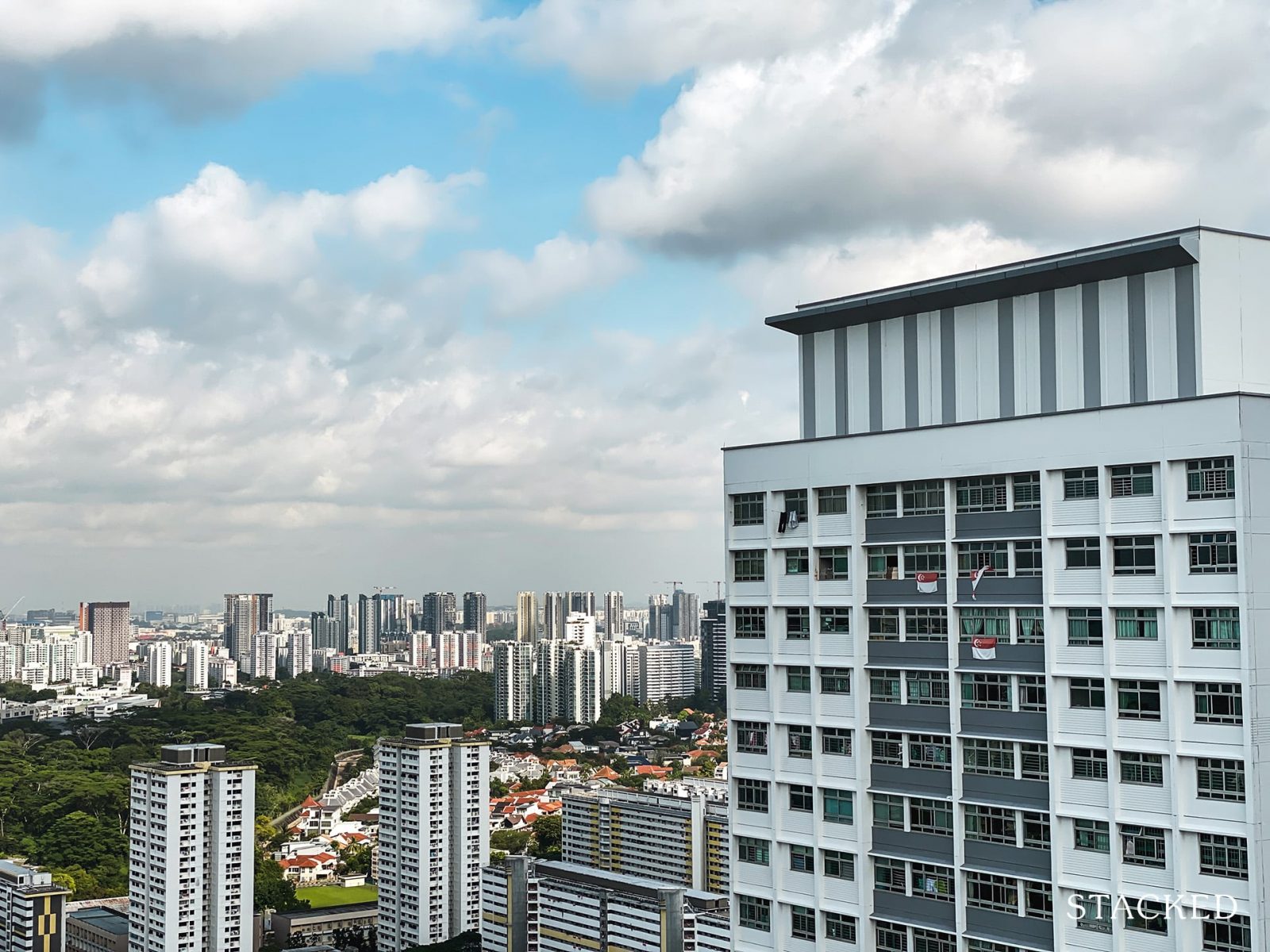
However, there’s little data on which specific HDB towns are seeing more resale flats enter the market. It’s possible that, whatever the number of new flats reaching MOP, you just can’t find one where you need it.
You may find, for instance, that there’s few resale flats within range of your office, or within range of a desired school for your children (for self-explanatory reasons, flats near prestigious schools, or near business parks, tend to be snapped up almost as soon as they enter the market).
More from Stacked
Why Punggol Northshore Could Be The Next Hotspot In The HDB Resale Market
When I first heard the name Northshore, I thought it was some sort of holiday resort, or maybe an old…
Lacking a choice, you may have to concede to higher prices, and end up paying COV.
2. Fallout from the recent BTO launch exercises
The BTO launch exercise in August 2020 was the largest one to date; and they included some highly desirable mature towns. In particular:
- Bishan Towers
- Dakota One (Geylang)
- Kebun Baru Edge (Ang Mo Kio)
- Tampines GreenCrest, GreenGlade, and GreenOpal
On the ground, we’ve encountered plenty of BTO applicants who rushed for these units, failed to secure one, and gave up on the idea of balloting.
Some are more receptive to the idea of paying more, if it means securing the home they want. It also helps that they can move in without waiting for construction (which may sometimes be delayed due to Covid-19).
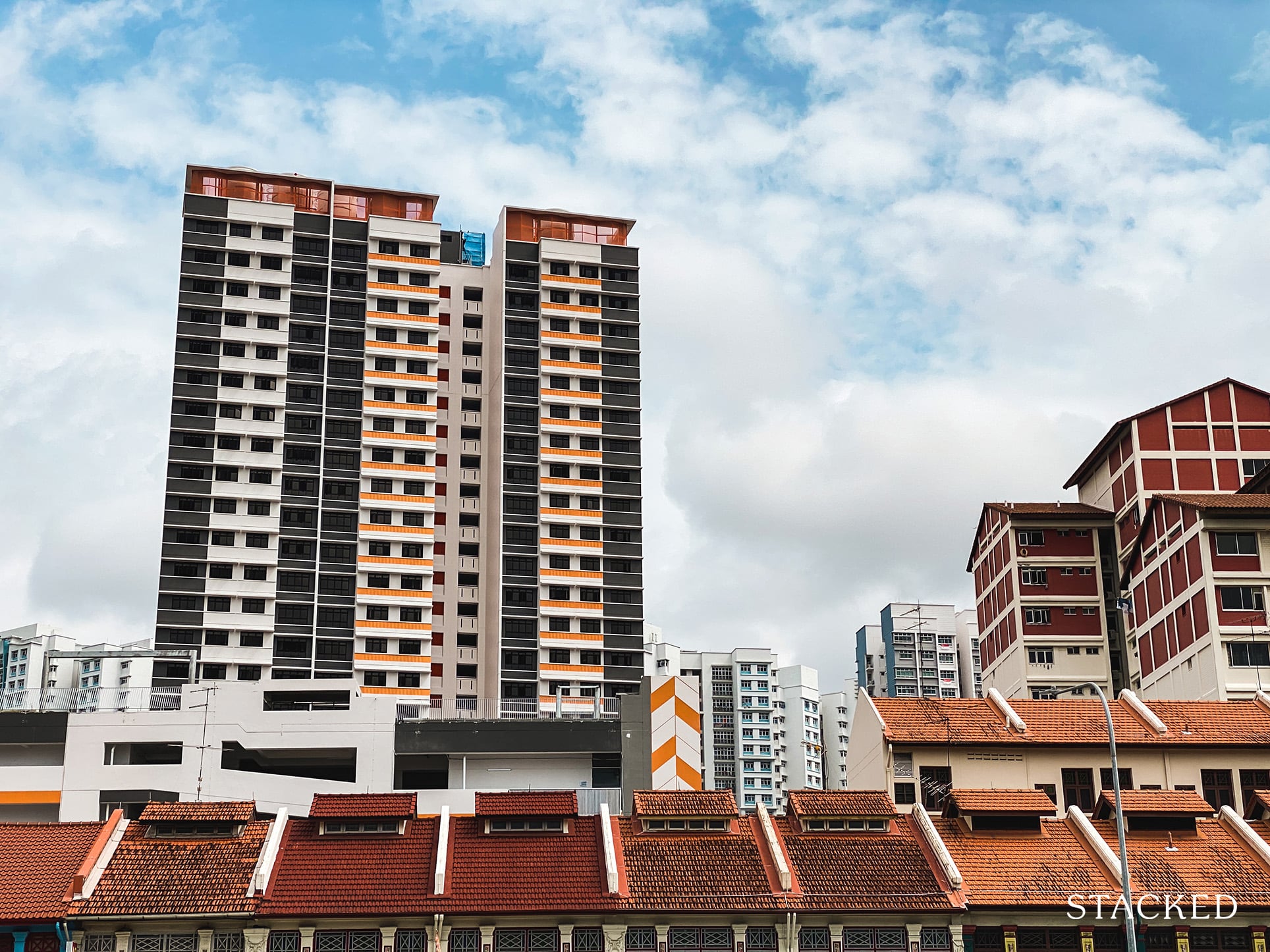
Property AdviceCouldn’t Get Your BTO Flat Of Choice? Here Are 5 Alternative Steps To Take
by Ryan J. Ong3. Urgency in the transaction
There are some buyers who absolutely need a flat right away – they can’t wait three to five years for construction, and they can’t wait 30 months to apply for a new flat (if they’ve just sold their private property).
These buyers also tend to rush the sale process – they may know they’re accepting a price on the high side, but would rather pay the COV than be kept without a roof.
4. Buyers using resale flats as an alternative to a condo
As we’ve mentioned in our previously linked article, some buyers may have opted for resale instead of an Executive Condominium (EC) or fully private condo.
(Note that there is no income ceiling for resale flats)
Now if a condo was even an option in the first place, these buyers aren’t going to flinch at the concept of COV. The average condo price right now, is $1,565 psf:
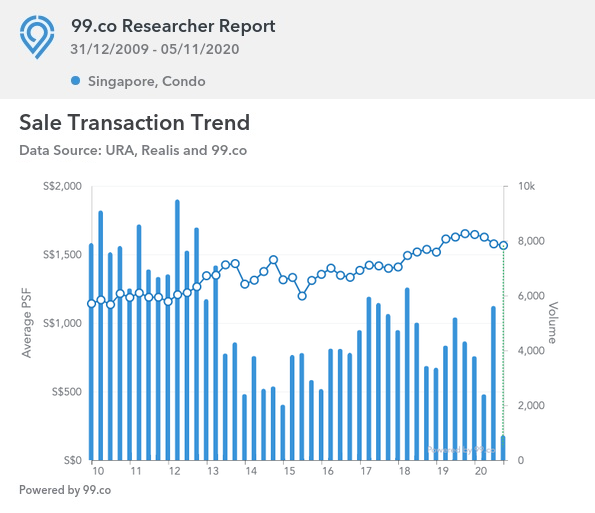
The typical 1,000 sq. ft. family condo would thus be around $1.5 million, with a minimum cash down payment of $75,000.
They were already in a financial position to handle anything but the most outrageous COV prices. As such, these buyers may be willing to go for the most highly prized resale flats as an alternative to a condo (e.g. flats in the most mature districts, blocks closest to the MRT station, and so forth).
It’s still the more affordable choice to them.
5. Emphasis on pure home ownership
Not everyone is interested in resale gains or rental yields. If your flat is simply a home – or you plan to stay there for the rest of your life – then personal comfort is more important.
You may be willing to pay the COV for a flat that’s near your friends and family, in your favourite neighbourhood, etc. It may not matter that you’re technically overpaying, as you’re not expecting any profit anyway.
6. Rare or DBSS flats
In October, 13 flats were sold at or above the $1 million mark. In many million-dollar transactions, COV might play a major role.
We don’t know the COV for these units, as HDB no longer publishes the figures; but we can take a hint from the past. According to the Straits Times, million-dollar flats in the past (dating back to 2016) have had COV of $195,000 to as high as $250,000.
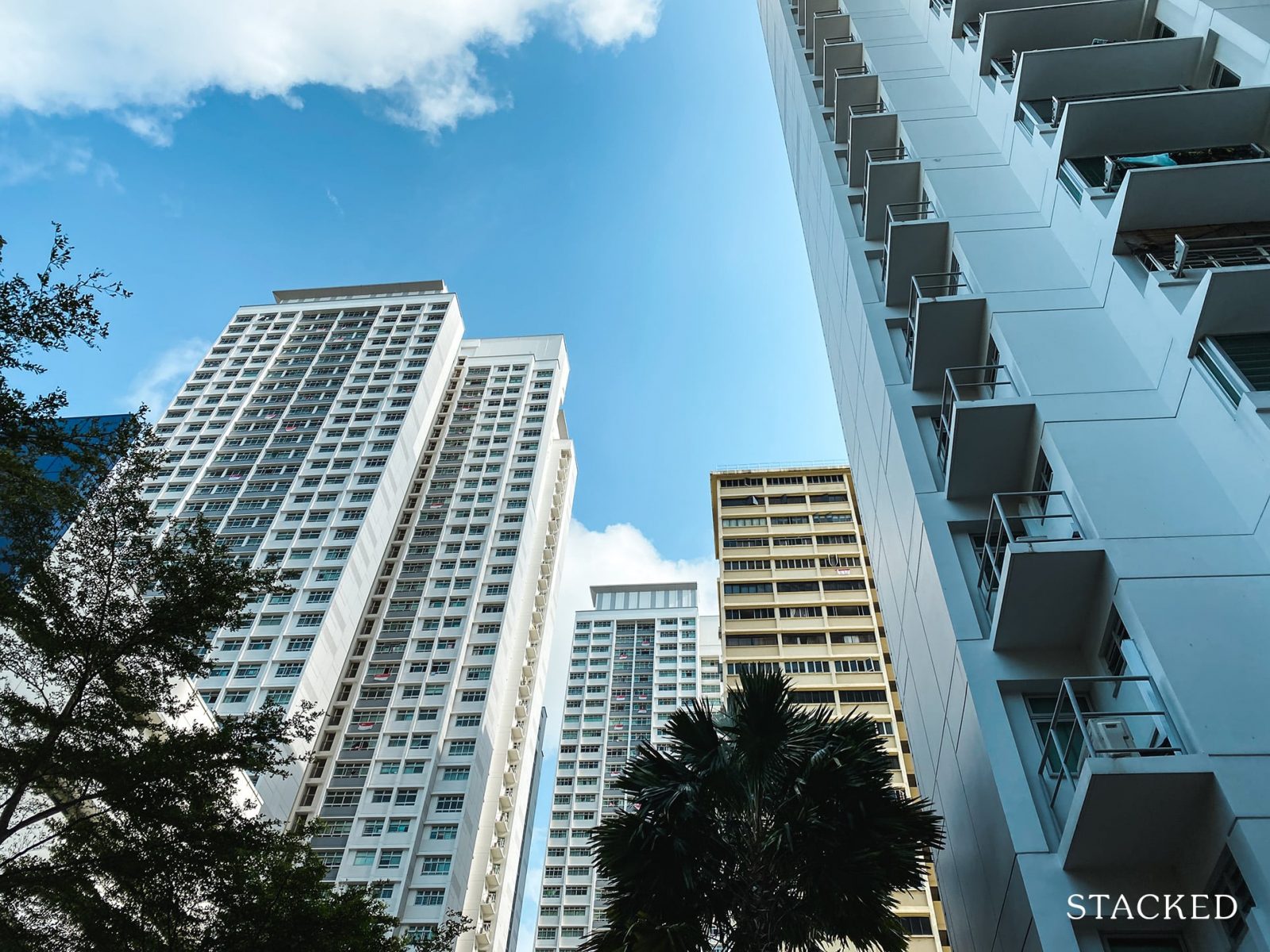
However, almost all of these flats are not “regular” HDB flats. Many are double-storey maisonettes, which are no longer built by HDB.
Many others are also Design, Build, and Sell Scheme (DBSS) flats – such as the five-room unit at Natura Loft (Bishan), that sold for $1.2 million in October. DBSS flats, while lacking condo facilities, were nonetheless built by private developers and have higher quality finishing.
As COV data remains hidden, do get an informed expert who knows the right price levels. Do this before you secure the OTP, and would incur a loss by backing out. We can put you in touch with the right professionals if you need.
You can also follow Stacked for the latest insights into the Singapore property market, and in-depth reviews of the local private property market.
If you’d like to get in touch for a more in-depth consultation, you can do so here.
Ryan J. Ong
A seasoned content strategist with over 17 years in the real estate and financial journalism sectors, Ryan has built a reputation for transforming complex industry jargon into accessible knowledge. With a track record of writing and editing for leading financial platforms and publications, Ryan's expertise has been recognised across various media outlets. His role as a former content editor for 99.co and a co-host for CNA 938's Open House programme underscores his commitment to providing valuable insights into the property market.Read next from Property Market Commentary

Property Market Commentary Why The Singapore Property Market Will Be Different In 2026 — And It’s Not Just About Prices

Property Market Commentary 2025 Year-End Review Of The Singapore Property Market: What The Numbers Reveal

Property Market Commentary How The HDB Resale Market Performed In 2025, And What It Means For 2026 Prices

Property Market Commentary 4 Key Trends Reshaping Singapore’s New Launch Condo Market In 2026
Latest Posts

Pro This 21-Year-Old Condo Didn’t Sell Out Initially, Yet Became A Top Performer

Editor's Pick What I Only Learned After My First Year Of Homeownership In Singapore

Singapore Property News Why More Land Doesn’t Automatically Fix Housing In Singapore

On The Market Here Are The Cheapest 4-Room HDB Flats in Central Singapore You Can Still Buy From $490K

Editor's Pick Should We Buy An Old 99-Year Leasehold Condo To Live In: Will It’s Value Fall When The Lease Runs Out?

Pro How A Once “Ulu” Condo Launched In 1997 Became A Top Performer

Editor's Pick I Reviewed A New Launch 4-Bedroom Penthouse At Beauty World

Editor's Pick Why Singaporean Families Are Looking At This Landed Enclave From Around $4M

Singapore Property News Lentor’s First Condo Is Complete — The Early Profits May Surprise You

Property Advice We Own A $800K 1-Bedder And A $1.1M 3-Bedder: Is It Possible To Upgrade To A 4-Bedder Condo?

On The Market These Are Some Of The Cheapest 5-Room HDB Flats Left In Central Singapore

Pro This 698-Unit Ang Mo Kio Condo Launched At The Wrong Time — And Still Outperformed Peers

Singapore Property News $281.2M in Singapore Shophouse Deals in 2H2025 — But That Number Doesn’t Tell the Full Story

Property Investment Insights These Resale Condos In Singapore Were The Top Performers In 2025 — And Not All Were Obvious Winners

Singapore Property News CapitaLand–UOL’s $1.5 Billion Hougang Central Bid May Put Future Prices Above $2,500 PSF


